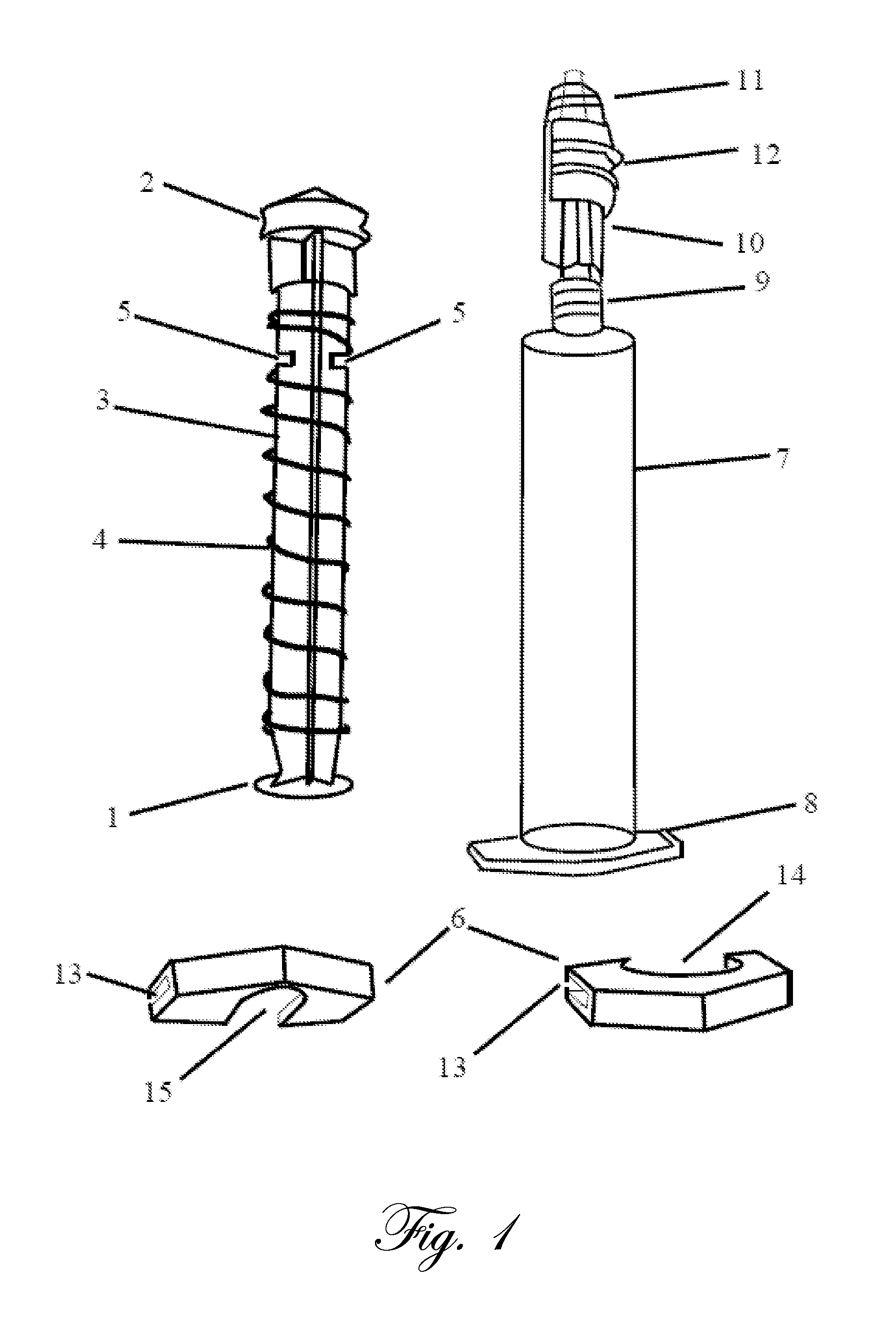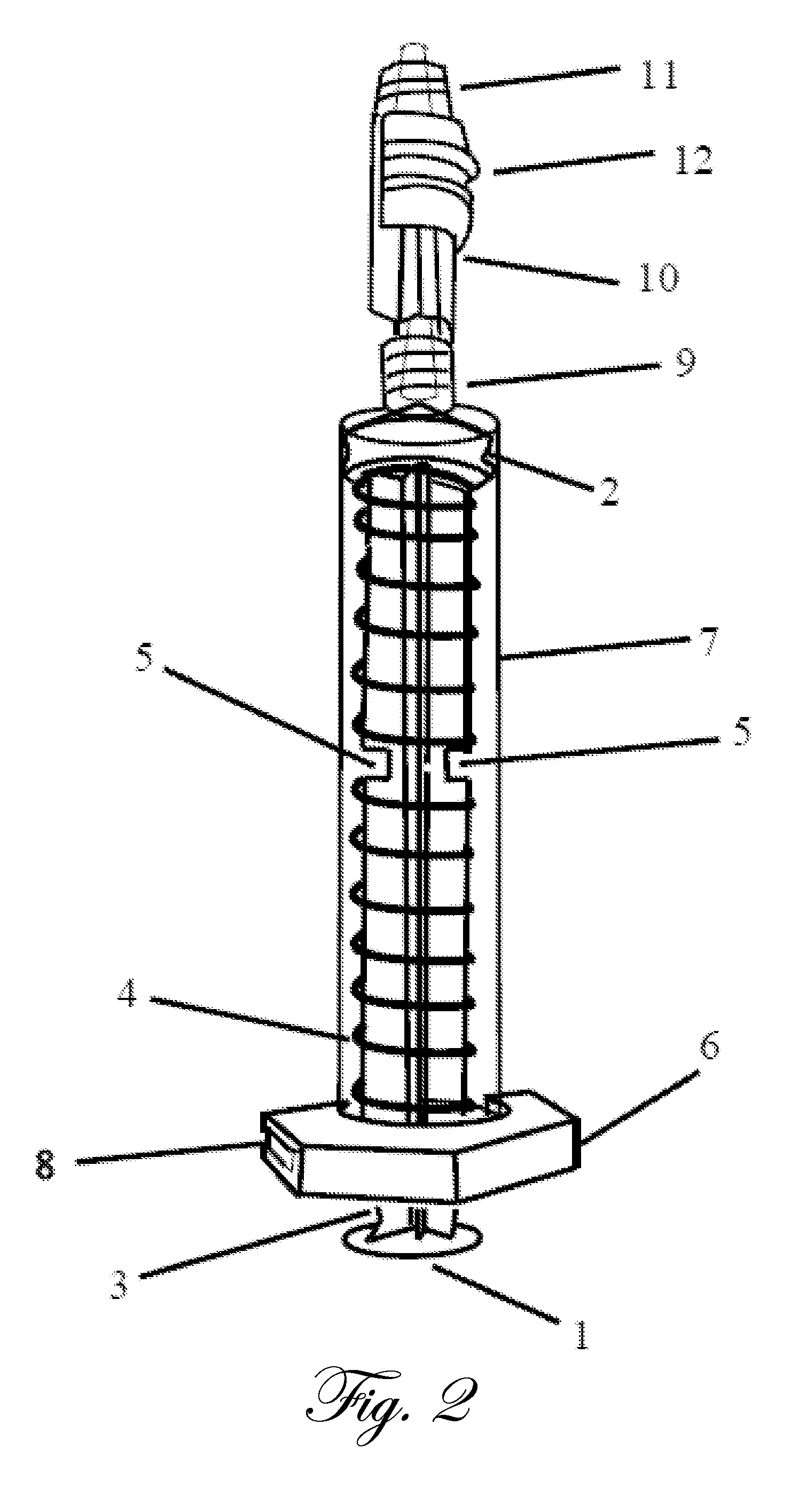Automatic syringes
a technology of automatic syringes and syringes, which is applied in the field of syringes, can solve the problems of inability to control, inability to provide control, and unstable syringes,
- Summary
- Abstract
- Description
- Claims
- Application Information
AI Technical Summary
Benefits of technology
Problems solved by technology
Method used
Image
Examples
Embodiment Construction
[0049]FIG. 1 is a schematic illustration of an example embodiment of an automatic syringe. FIG. 14 is a photograph of an example embodiment similar to that described in connection with FIG. 1. A plunger has a the thumb rest 1 (plunger flange), a the stopper or seal complex 2 of the plunger of a particular diameter, a plunger body 3 of a lesser diameter of the stopper or seal of the plunger, a spring 4 that encircles the plunger body and abuts on the seal complex that is of greater diameter than the spring, and notches 5 in the plunger that are the female component to the male component of a barrel endplate mechanism to reversibly lock the plunger in position. An endplate 6 of the barrel comprises a clip, fitting, or intrinsic molding of the barrel that is clipped, bonded, glued, welded or molded firmly to finger flanges 8 of the barrel 7 and contains and restrains the spring 4 within the syringe barrel 7 and reversibly mates with the notches 5 in the body of the plunger reversibly l...
PUM
| Property | Measurement | Unit |
|---|---|---|
| Fraction | aaaaa | aaaaa |
| Fraction | aaaaa | aaaaa |
| Fraction | aaaaa | aaaaa |
Abstract
Description
Claims
Application Information
 Login to View More
Login to View More - R&D
- Intellectual Property
- Life Sciences
- Materials
- Tech Scout
- Unparalleled Data Quality
- Higher Quality Content
- 60% Fewer Hallucinations
Browse by: Latest US Patents, China's latest patents, Technical Efficacy Thesaurus, Application Domain, Technology Topic, Popular Technical Reports.
© 2025 PatSnap. All rights reserved.Legal|Privacy policy|Modern Slavery Act Transparency Statement|Sitemap|About US| Contact US: help@patsnap.com



